How to Decode Music Note Symbols and Their Meanings
Music note symbols are vital to understanding written music, representing both pitch and duration. Derived from ancient civilizations, modern notation advanced through European monastic practices and was standardized by Guido d'Arezzo in the medieval period.
Common symbols include the whole note (four beats), half note (two beats), and quarter note (one beat), each indicating specific durations. Rests, which denote periods of silence, correspond to these note values.
This framework enables rhythmic structure and melodic interpretation, essential for performers and composers. To explore the intricacies and variations of these symbols further, an in-depth examination is highly informative.
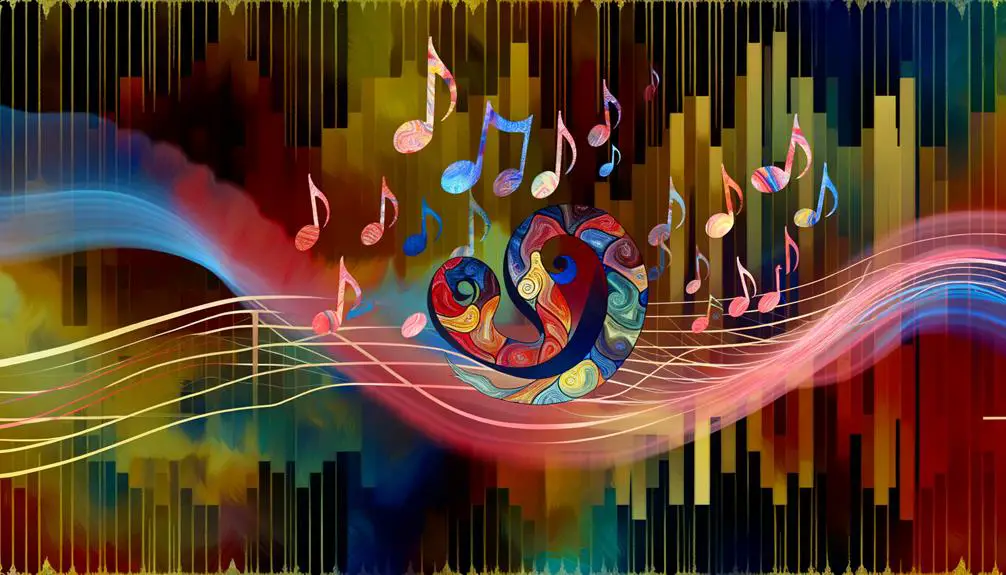
Key Takeaways
- Whole Note: Represents four beats of sound, the longest standard note duration in common time.
- Half Note: Indicates two beats of sound, providing rhythmic variety and balance in music.
- Quarter Note: Denotes one beat in common time, fundamental for constructing musical patterns.
- Eighth Note: Symbolizes half a beat, essential for creating more intricate rhythmic structures.
- Sixteenth Note: Represents a quarter of a beat, used for highly detailed and fast rhythms.
History of Music Notation
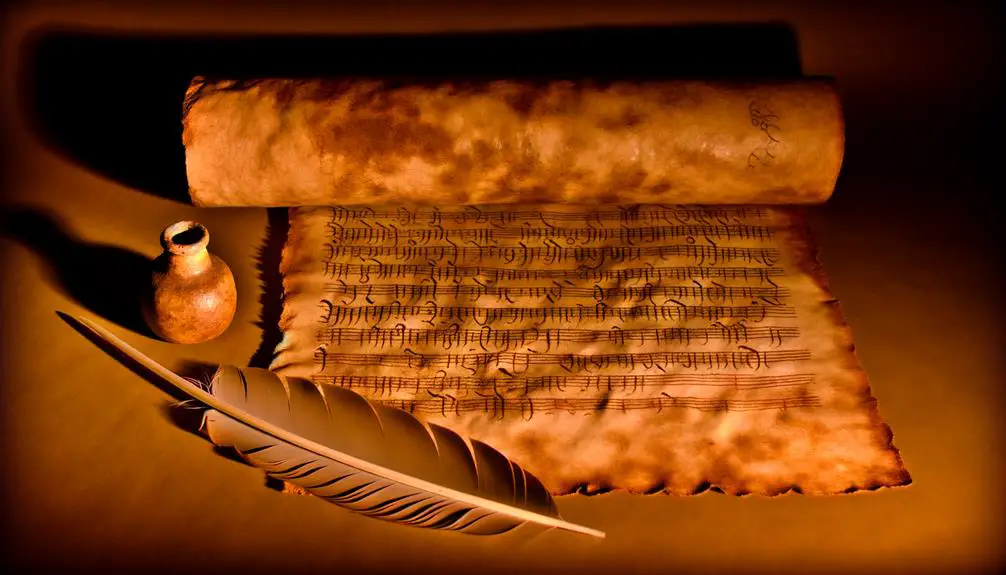
The history of music notation can be traced back to ancient civilizations, where early forms of symbolic representation were developed to convey musical ideas. The Sumerians and Egyptians employed rudimentary notation systems, primarily using symbols to indicate pitch and rhythmic patterns.
By the medieval period, European monks advanced these systems, creating neumes to document Gregorian chants. Neumes evolved into more precise notations with the introduction of the staff by Guido d'Arezzo in the 11th century. This innovation standardized pitch, laying the groundwork for modern notation.
The Renaissance period further refined notation with the development of mensural notation, which introduced note shapes to indicate duration. Consequently, these historical advancements allowed for the complex, detailed musical scores used today.
Basic Music Note Symbols
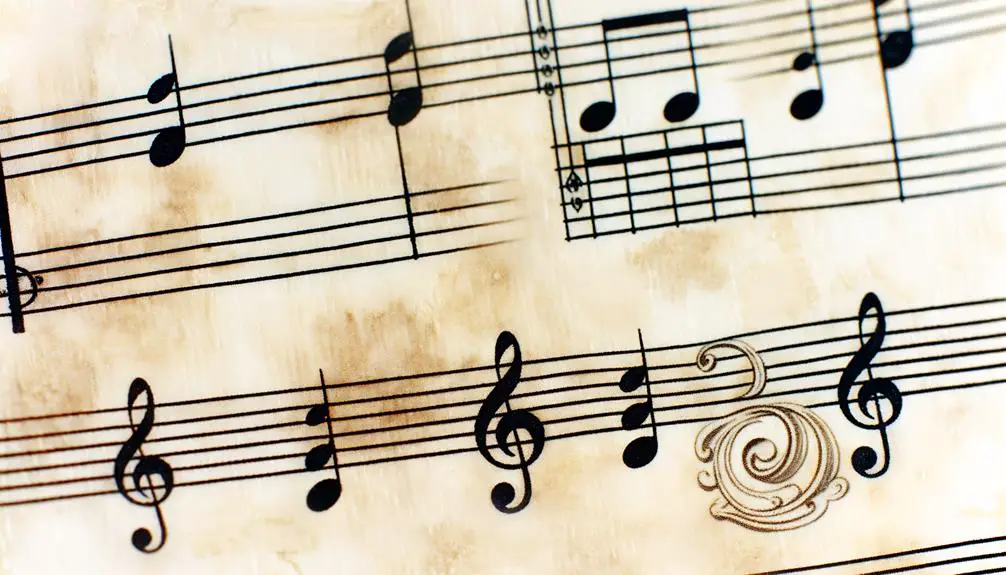
Basic music note symbols serve as the fundamental building blocks of music notation, representing both pitch and duration to convey musical compositions accurately. These symbols are pivotal for performers to interpret the rhythm and melody of a piece. Commonly used note symbols include the whole note, half note, quarter note, eighth note, and sixteenth note. Each symbol has a specific shape that indicates its duration relative to the others.
| Note Symbol | Duration Relative to Whole Note |
|---|---|
| Whole Note | 1 |
| Half Note | 1/2 |
| Quarter Note | 1/4 |
| Eighth Note | 1/8 |
| Sixteenth Note | 1/16 |
Understanding these basic symbols is essential for anyone learning to read or write music, serving as the foundation for more complex rhythmic and melodic structures.
Whole Notes and Rests
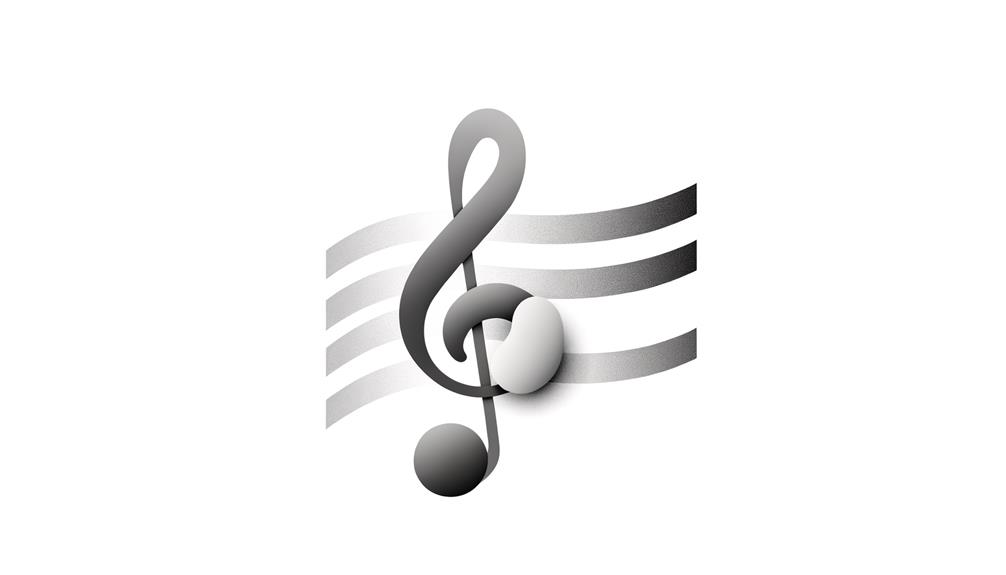
Whole notes and their corresponding rests serve as fundamental components in music notation, representing the longest standard note duration and its silent counterpart. A whole note, depicted as an open, oval-shaped note head without a stem, typically spans four beats in common time. Its corresponding rest, a small rectangle hanging from the second line of the staff, also represents four beats of silence.
These symbols are essential in creating rhythmic structure, providing a foundation upon which compositions are built. Their duration allows for extended musical phrases or rests, facilitating a sense of continuity and cohesion within a piece. Understanding whole notes and rests is vital for musicians to accurately interpret and execute musical works.
Half Notes and Rests
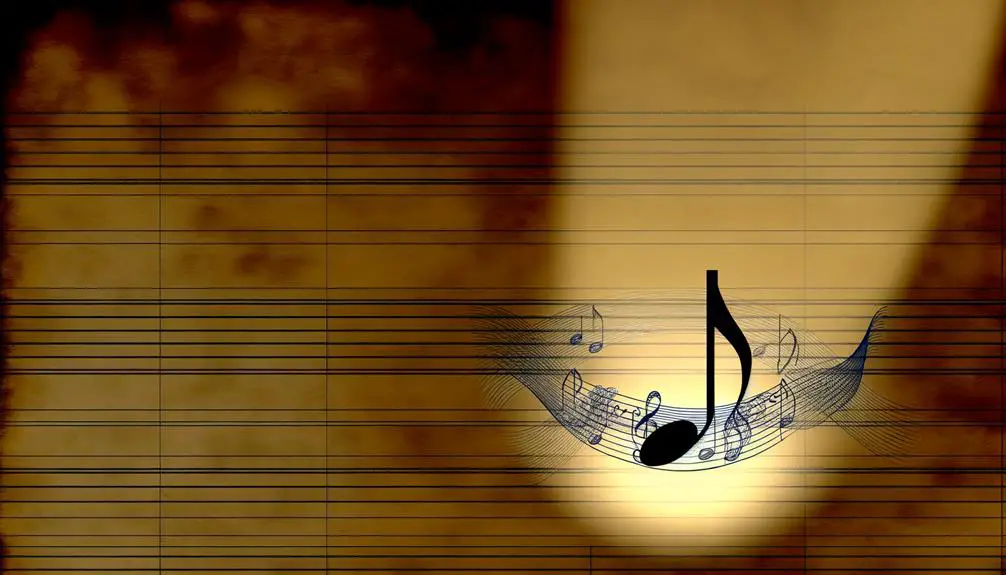
Comparable in significance to whole notes, half notes and their corresponding rests play an important role in music notation by representing two beats of sound and silence, respectively, in common time.
The half note, characterized by an open note head with a stem, is essential for creating rhythmic variety and balance within a measure.
Its counterpart, the half rest, is depicted as a small rectangle sitting on the middle line of the staff, indicating a two-beat silence.
The nuanced use of half notes and rests allows composers to craft phrases with deliberate pacing, contributing to the overall texture and dynamic contour of a piece.
Understanding these elements is vital for performers to accurately interpret and convey the intended musical expression.
Quarter Notes and Rests
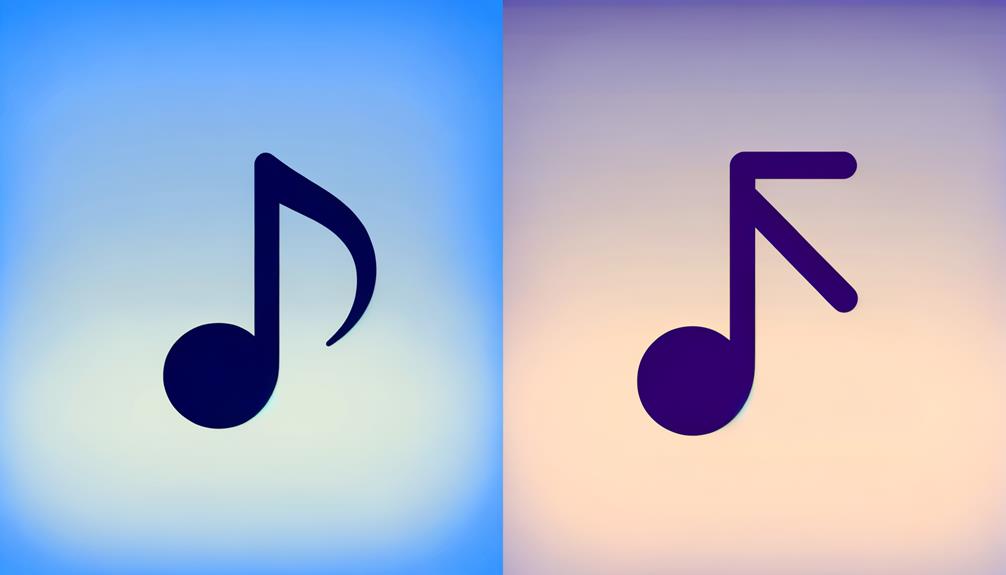
Quarter notes and their corresponding rests, each representing one beat in common time, are fundamental components of rhythmic notation, offering essential building blocks for constructing a wide array of musical patterns and expressions.
The quarter note, notated as a filled-in oval with a stem, is often the standard unit of measure in time signatures like 4/4. Its rest counterpart, denoted by a squiggly line resembling a ‘Z' on its side, signifies a silence of equivalent duration.
These elements are critical in both simple and complex rhythms, providing a balanced framework that musicians rely on. Understanding the application and interpretation of quarter notes and rests is crucial for performers and composers, enabling precise timing and dynamic variation in musical compositions.
Eighth and Sixteenth Notes
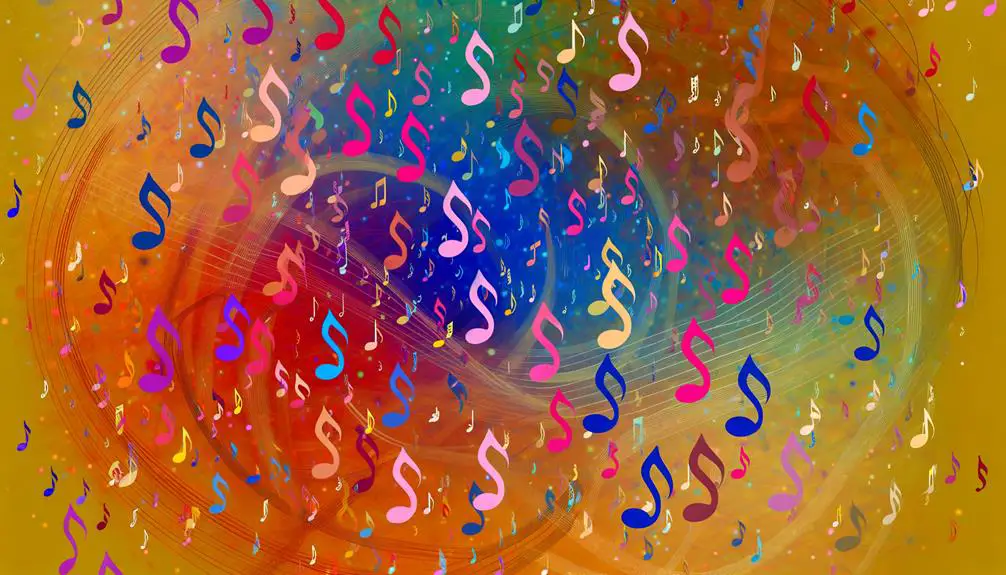
Building upon the foundational understanding of quarter notes and rests, eighth and sixteenth notes introduce increased rhythmic complexity and nuance, each subdividing a quarter note into two and four equal parts, respectively. This subdivision allows for more intricate and detailed musical expressions.
Key aspects of eighth and sixteenth notes include:
- Visual Representation: Eighth notes are denoted with a single flag or beam, while sixteenth notes have two flags or beams.
- Counting and Timing: Musicians often use syllables such as '1-and' for eighth notes and '1-e-and-a' for sixteenth notes to maintain precise timing.
- Musical Application: These notes are essential for genres requiring fast, dynamic rhythms, such as classical, jazz, and contemporary music.
Understanding these elements enhances rhythmic literacy and musical versatility.
Importance of Note Values
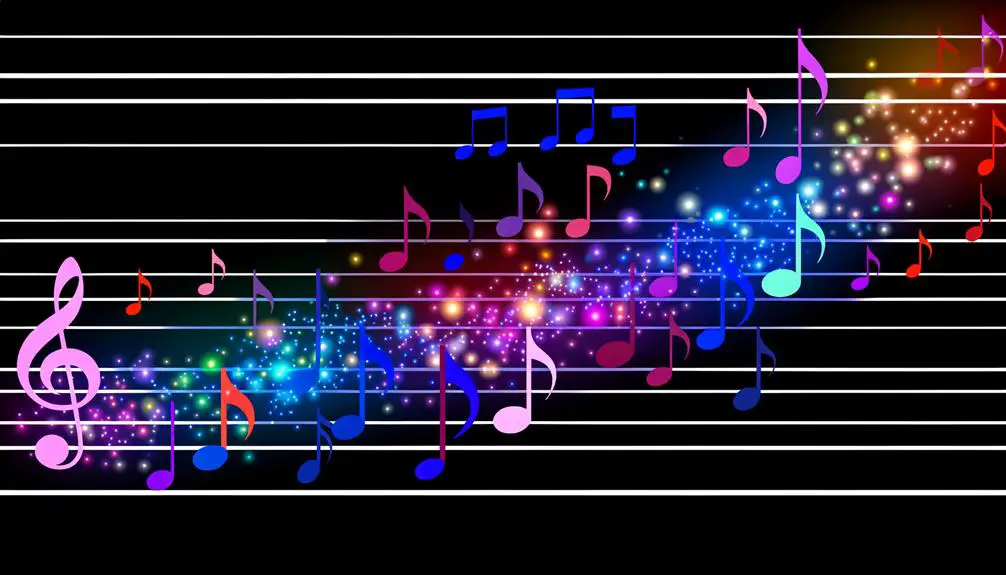
Understanding the importance of note values is vital for accurate rhythmic interpretation and effective musical communication. Note values determine the duration of each sound, thus shaping the rhythmic structure of a piece. This understanding enables musicians to execute complex rhythms and syncopations with precision. Research indicates that consistent practice with various note values enhances a musician's timing and coordination skills.
| Note Value | Symbol | Duration |
|---|---|---|
| Whole Note | 𝅝 | 4 beats |
| Half Note | 𝅗𝅥 | 2 beats |
| Quarter Note | 𝅘𝅥 | 1 beat |
| Eighth Note | 𝅘𝅥𝅮 | 1/2 beat |
Analyzing these note values within different time signatures is essential for mastering intricate musical passages and achieving expressive performance. Accurate note value interpretation also facilitates ensemble cohesion by ensuring all members adhere to the same rhythmic framework.
Conclusion
The journey through the landscape of music notation reveals a system where each symbol serves as a landmark, guiding performers through the intricate tapestry of sound.
Whole notes, half notes, quarter notes, and their corresponding rests create a rhythmic architecture that underpins musical compositions.
Eighth and sixteenth notes add intricate flourishes, enriching the auditory experience.
The precise values of these notes and rests are the heartbeat of music, transforming mere vibrations into a symphony of expressive artistry.






